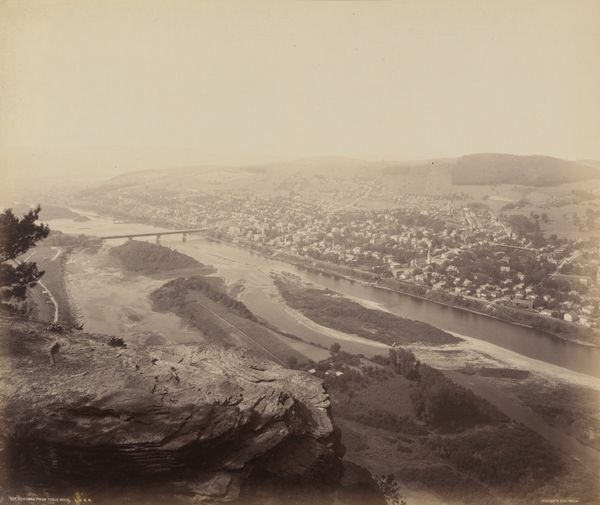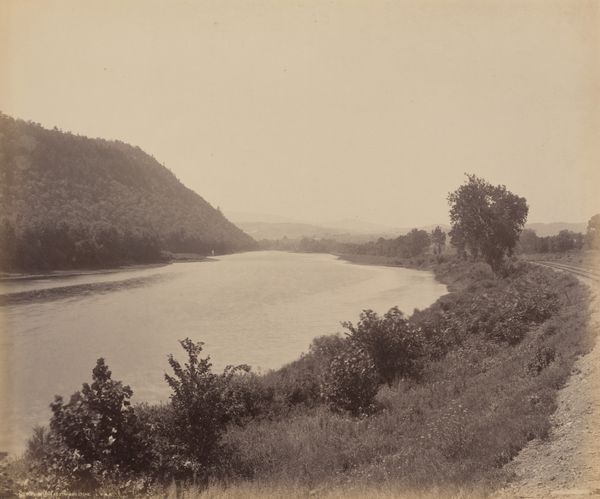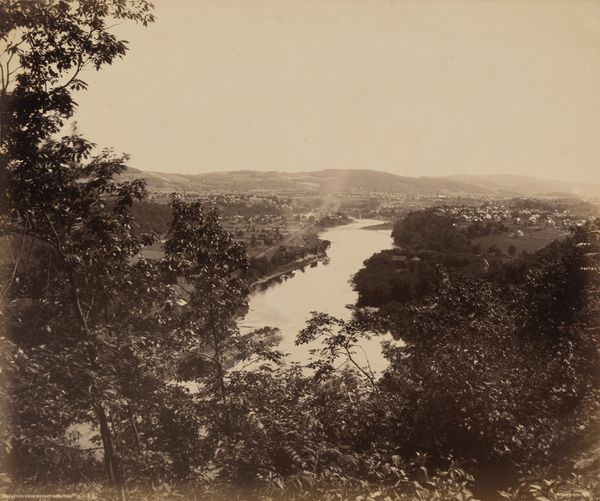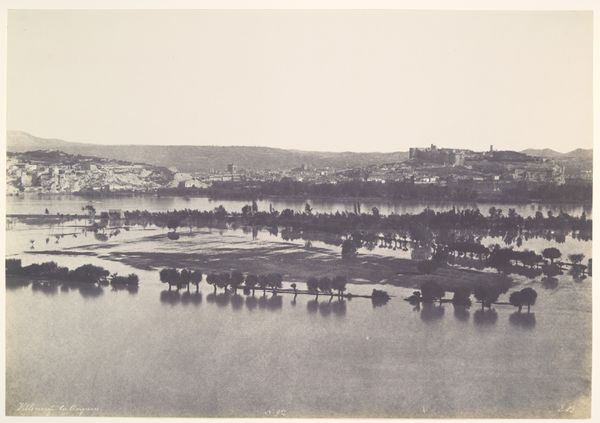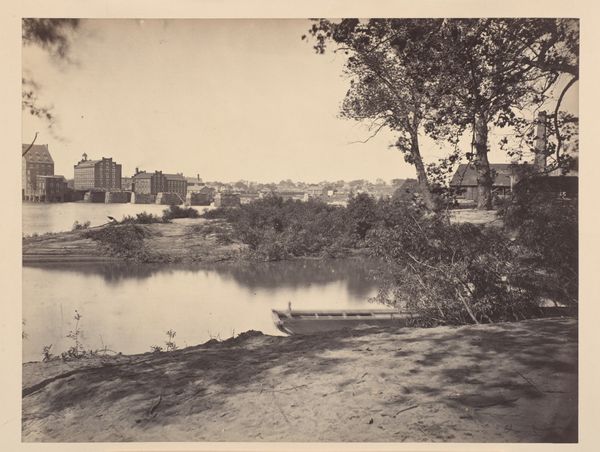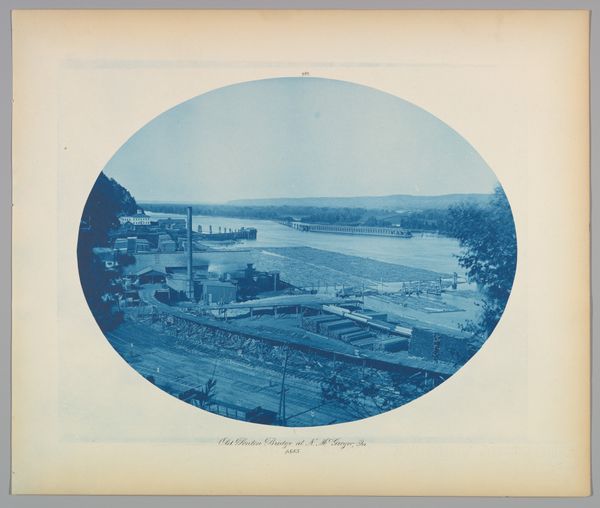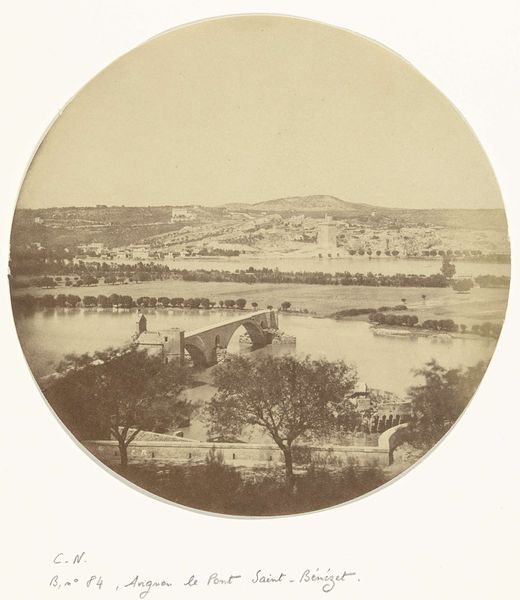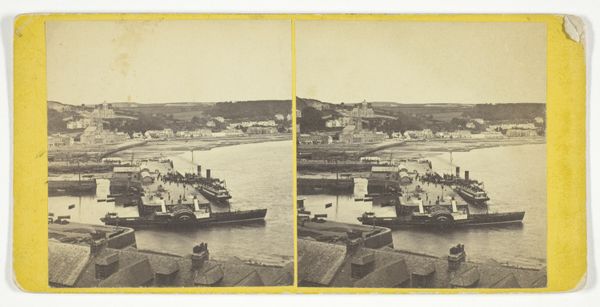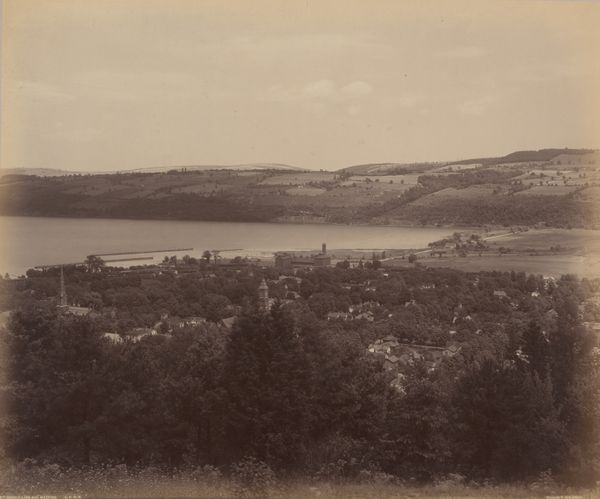
photography, gelatin-silver-print
#
natural tone
#
organic shape
#
landscape
#
photography
#
outdoor scenery
#
gelatin-silver-print
Dimensions: image: 14.9 × 20.4 cm (5 7/8 × 8 1/16 in.)
Copyright: National Gallery of Art: CC0 1.0
Curator: What strikes me immediately is how still everything seems. It's such a calm scene, a quiet overlook, really. Editor: Yes, there is something almost unnervingly still about it, isn’t there? That muted, almost sepia tone certainly contributes. This gelatin silver print, titled "Fort Snelling" by Joel E. Whitney, was taken around 1865. It’s such a quintessential landscape. Curator: 1865, that's right at the tail end of the Civil War, isn't it? I wonder what stories that fort could tell. It looks solid, unwavering. The way it's perched on that bluff makes it seem both commanding and vulnerable, somehow. Editor: Well, forts, in general, function as imposing and intimidating signifiers of power and dominion. Consider their architectural placement—the high ground—in addition to the geometric, angular lines suggesting constructed human will. Curator: The shape reminds me of those old-timey portrait lockets! All that warm-toned landscape cradled in an oval. Though, thinking about it more, there is one lone figure near the center of the photograph, seemingly swallowed by the view, perhaps emphasizing that tension of power. Editor: I agree completely; this figure provides a sense of scale. Notice also how the light bounces off of the water and contrasts with the shadows. Perhaps this highlights a type of liminality—a sense of cultural or emotional ambiguity. It feels, as a scene, representative of a moment caught in time. Curator: I see it, I do. This "in-betweenness" comes through in the tonality, which looks aged and almost dreamlike. As a work of art, it feels like history pressing down on a personal moment. I wonder if that individual in the landscape felt the same… the weight of everything, suspended. Editor: This particular style—a still frame with a singular view—lends itself to a broader dialogue on place. It functions less like an individualized or emotional piece and leans further toward capturing a historical sentimentality about what endures or decays. Curator: What I admire most, in the end, is Whitney's ability to create an image that feels so expansive yet intimate, simultaneously. Editor: Indeed, and that blending of monumentality and the momentary makes the photograph so haunting. It’s a reminder that history is always both grand and personal.
Comments
No comments
Be the first to comment and join the conversation on the ultimate creative platform.
